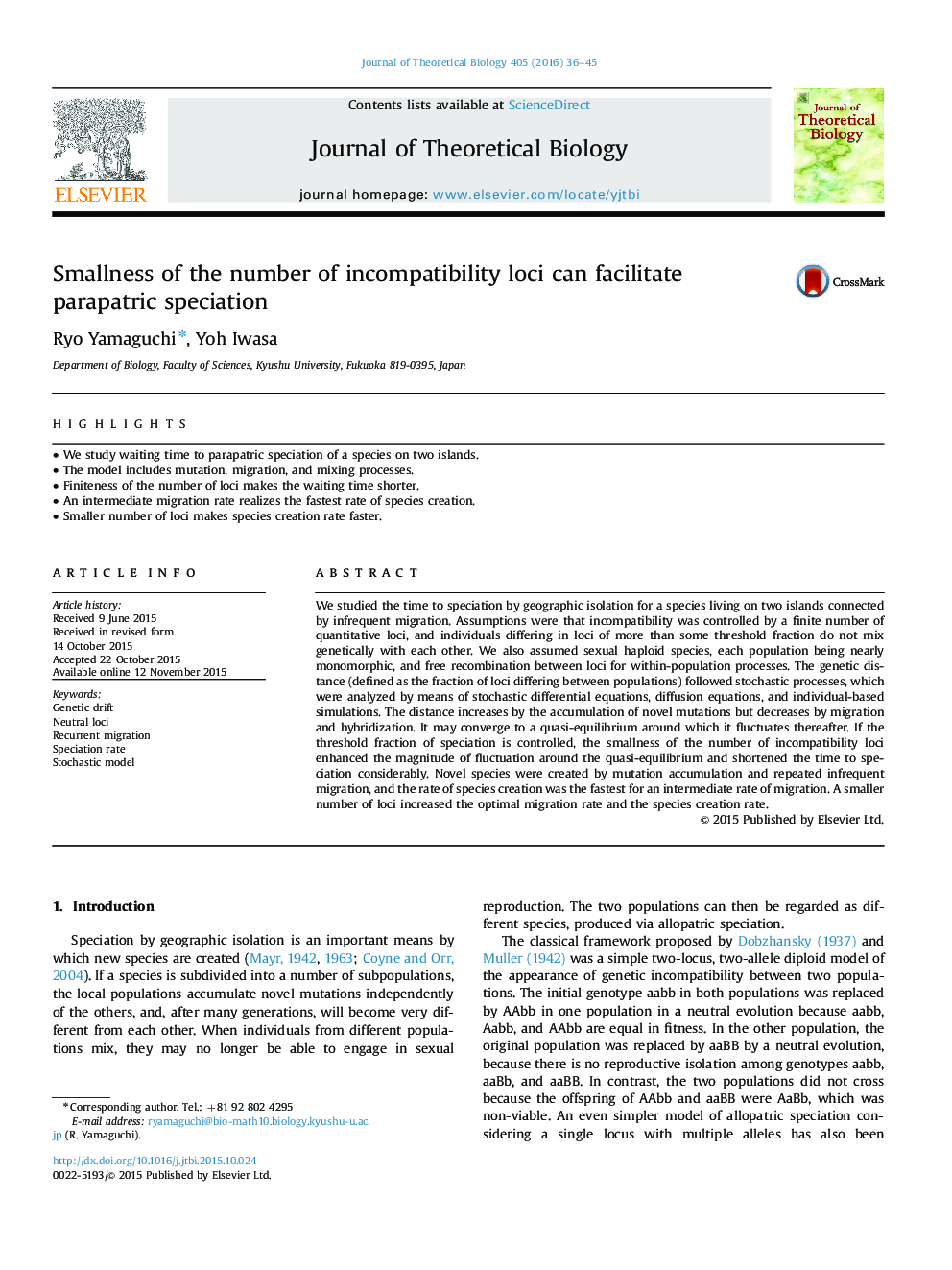| Article ID | Journal | Published Year | Pages | File Type |
|---|---|---|---|---|
| 6369114 | Journal of Theoretical Biology | 2016 | 10 Pages |
â¢We study waiting time to parapatric speciation of a species on two islands.â¢The model includes mutation, migration, and mixing processes.â¢Finiteness of the number of loci makes the waiting time shorter.â¢An intermediate migration rate realizes the fastest rate of species creation.â¢Smaller number of loci makes species creation rate faster.
We studied the time to speciation by geographic isolation for a species living on two islands connected by infrequent migration. Assumptions were that incompatibility was controlled by a finite number of quantitative loci, and individuals differing in loci of more than some threshold fraction do not mix genetically with each other. We also assumed sexual haploid species, each population being nearly monomorphic, and free recombination between loci for within-population processes. The genetic distance (defined as the fraction of loci differing between populations) followed stochastic processes, which were analyzed by means of stochastic differential equations, diffusion equations, and individual-based simulations. The distance increases by the accumulation of novel mutations but decreases by migration and hybridization. It may converge to a quasi-equilibrium around which it fluctuates thereafter. If the threshold fraction of speciation is controlled, the smallness of the number of incompatibility loci enhanced the magnitude of fluctuation around the quasi-equilibrium and shortened the time to speciation considerably. Novel species were created by mutation accumulation and repeated infrequent migration, and the rate of species creation was the fastest for an intermediate rate of migration. A smaller number of loci increased the optimal migration rate and the species creation rate.
